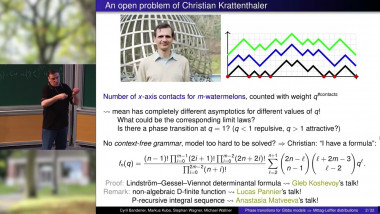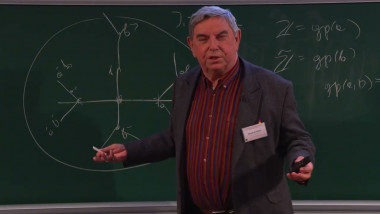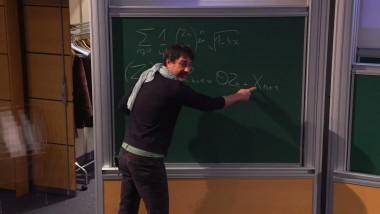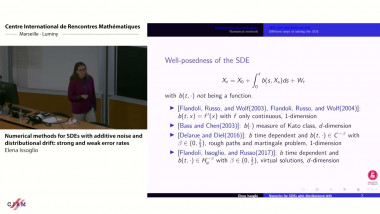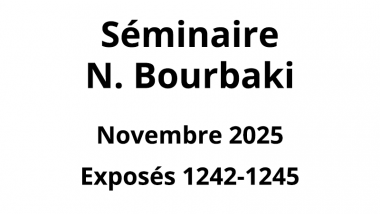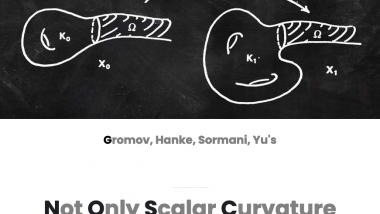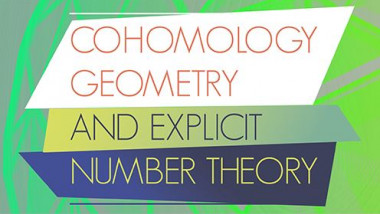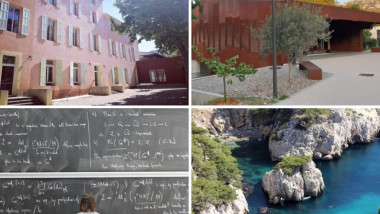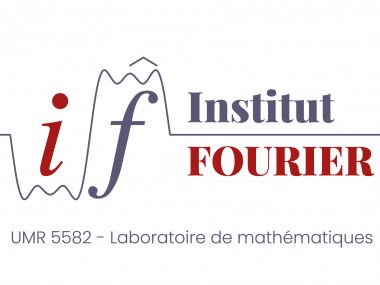Appears in collection : Stochastic and Deterministic Analysis for Irregular Models / Analyse stochastique et déterministe pour les modèles irréguliers
We will consider the discretization of the stochastic differential equation$$X_t=X_0+W_t+\int_0^t b\left(s, X_s\right) d s, t \in[0, T]$$where the drift coefficient $b:[0, T] \times \mathbb{R}^d \rightarrow \mathbb{R}^d$ is measurable and satisfies the integrability condition : $|b|_{L^q\left([0, T], L^\rho\left(\mathbb{R}^d\right)\right)}<\infty$ for some $\rho, q \in(0,+\infty]$ such that$$\rho \geq 2 \text { and } \frac{d}{\rho}+\frac{2}{q}<1 .$$Krylov and Röckner [3] established strong existence and uniqueness under this condition.Let $n \in \mathbb{N}^², h=\frac{T}{n}$ and $t_k=k h$ for $k \in \left [ \left [0,n \right ] \right ]$. Since there is no smoothing effect in the time variable, we introduce a sequence $\left(U_k\right)_{k \in \left [ \left [0,n-1 \right ] \right ]}$ independent from $\left(X_0,\left(W_t\right)_{t \geq 0}\right)$ of independent random variables which are respectively distributed according to the uniform law on $[k h,(k+1) h]$. The resulting scheme Euler is initialized by $X_0^h=X_0$ and evolves inductively on the regular time-grid $\left(t_k=k h\right)_{k \in \left [ \left [0,n \right ] \right ]}$ by:$$X_{t_{k+1}}^h=X_{t_k}^h+W_{t_{k+1}}-W_{t_k}+b_h\left(U_k, X_{t_k}^h\right) h$$where $b_h$ is some truncation of the drift function $b$. When $b$ is bounded, one of course chooses $b_h=b$. Then the order of weak convergence in total variation distance is $1 / 2$, as proved in [1]. It improves to 1 up to some logarithmic correction under some additional uniform in time bound on the spatial divergence of the drift coefficient. In the general case (1), we will see that for suitable truncations $b_h$, the difference between the transition densities of the stochastic differential equation and its Euler scheme is bounded from above by $C h^{\frac{1}{2}\left(1-\left(\frac{d}{\rho}+\frac{2}{q}\right)\right)}$ multiplied by some centered Gaussian density, as proved in [2].
